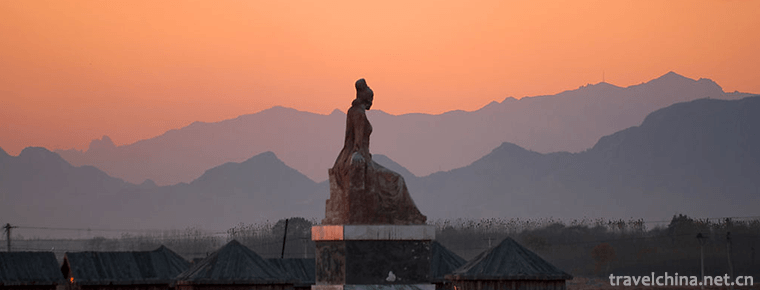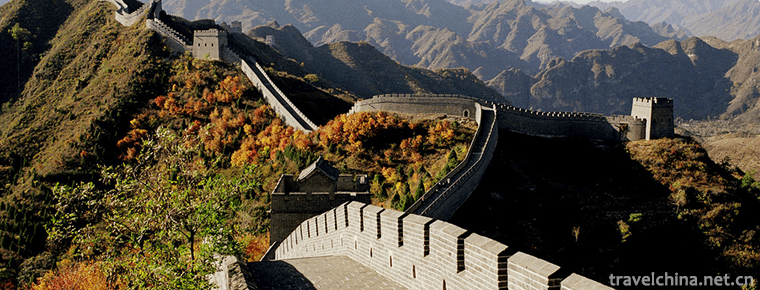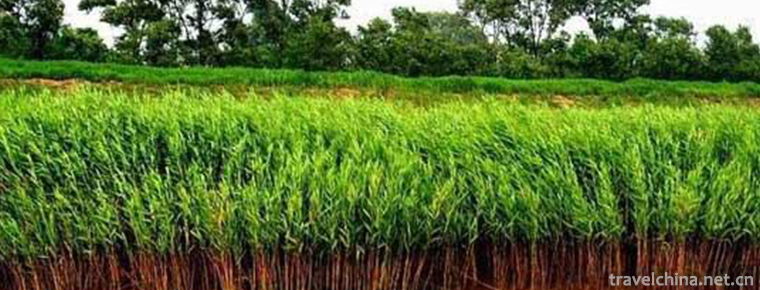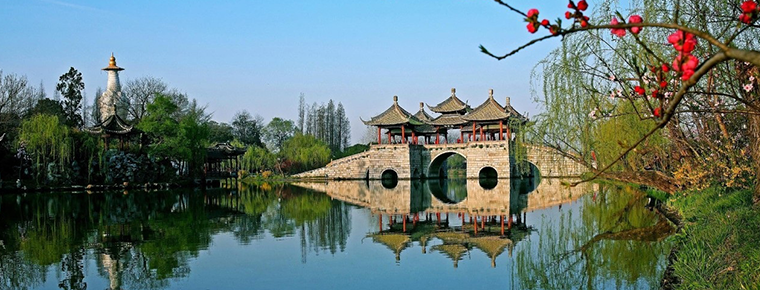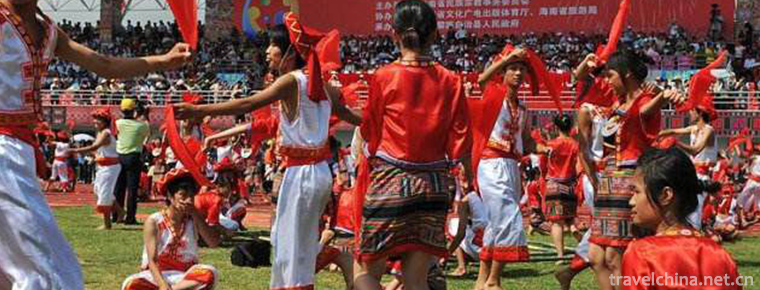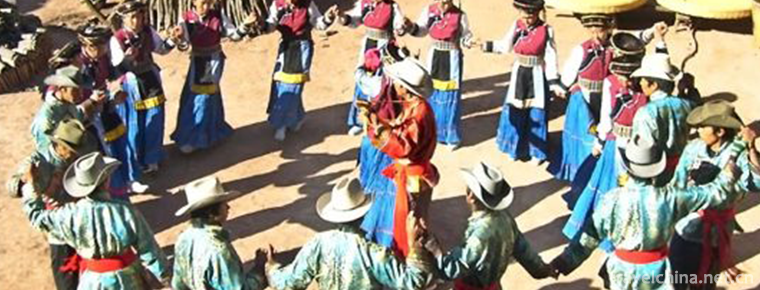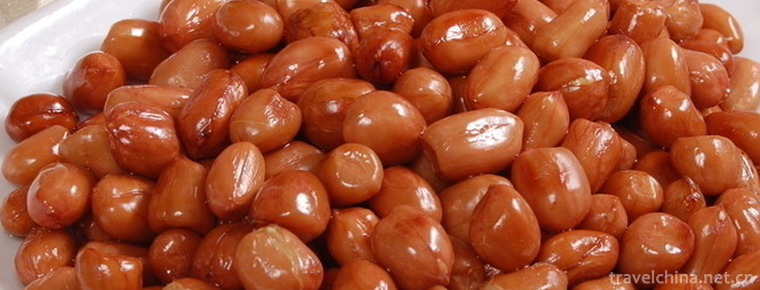Taiji boxing
Taiji boxing
Taijiquan, a national intangible cultural heritage, is based on the traditional Chinese Confucian and Taoist philosophy of Taiji, Yin-Yang dialectical concept as the core idea, integrating many functions such as self-cultivation, physical fitness, fighting and confrontation. It combines the changes of Yin-Yang five elements of Yi Xue, meridian and collateral science of traditional Chinese medicine, ancient guidance and intake techniques to form a kind of internal and external training, gentle, slow and light. The traditional Chinese boxing of combining spirit with rigidity and softness.
After 1949, it was unified adapted by the National Sports Commission for the purposes of gymnastics, performance and sports competitions. After China's reform and opening up, some of them have returned to their original appearance, which can be further divided into Taijiquan for comparison with martial arts, Taijiquan for gymnastics and Taijipusher.
There are many traditional Taijiquan schools. The common Taijiquan schools are Chen, Yang, Wu, Sun and He. Each school has its own characteristics and has its own inheritance relationship. As Taijiquan is a modern form of boxing, with many schools and a broad mass base, it is a very vital branch of Chinese Wushu.
In 2006, Taijiquan was listed in the first national intangible cultural heritage list in China.
In March 2018, deputies to the National People's Congress put forward proposals on the urgency of applying for the project. Li Guangyu and 33 other NPC delegates from the Henan delegation submitted to the 1st session of the 13th NPC "Suggestions on Accelerating the Promotion of Taijiquan Heritage Bidding Work and Further Promoting Taijiquan Culture".
Introduction to the Kinds of Boxing
Taijiquan is a perfect combination of Chinese dialectical theoretical thinking and martial arts, art, guidance and traditional Chinese medicine. It takes the traditional Chinese Confucian and Taoist philosophy of Taijiquan, Yin and Yang dialectical ideas as the core idea, and integrates many functions, such as self-cultivation, physical fitness, fighting and so on. It is a high-level human culture. As a sport form full of Oriental inclusive concept, the exercises of mind, qi, shape and spirit by its practitioners are very in line with the requirements of human physiology and psychology, and play an extremely important role in promoting individual physical and mental health and harmonious coexistence of human groups.
Origin of Initiation
At present, there are two different opinions about the origin of Taijiquan.
One way of saying, Taijiquan was created by Chen Wang-ting. Chen Boshan's martial arts, elite weapons, once set up a martial arts club in the village, began the Chen generation of practice of boxing and dancing weapons. At the end of the Ming Dynasty, Chen Shi ninth Chen Wangting, based on his ancestral boxing, absorbed the essence of all kinds of excellent boxing, combined with guidance, Shu Shu and traditional Chinese medicine and meridian science, and created a new kind of internal strength boxing, named Taijiquan according to the meaning of yin and Yang conversion. Chen Changxing, the 14th Chen family, opened the door of spreading boxing widely. Yang Luchan, a Yongnian in Hebei Province, was his famous disciple. After that, Chen's Taijiquan gradually evolved into the representative schools of "Yang, Wu, Wu, Sun" and so on.
Another way of saying is that Zhang Sanfeng founded Wudang School and Neijiaquan. Taijiquan, as the head of Neijiaquan, respectfully calls Zhang Sanfeng as the ancestor, which is a kind of natural attribution. Zhang Sanfeng created Taijiquan, eight diagrams boxing, Xingyi Quan, five elements boxing, mixed yuan boxing and Xuanwu stick, all of which are derived from the Taoist Scriptures. Zhang Sanfeng's boxing method has a common characteristic, that is, paying attention to internal work and Yin-Yang changes, stressing the harmony and unity of idealism, Qi and strength, calm movement, implicit posture, vigorous and leisurely spirit. All these characteristics are consistent with Taoism's quiet and weak, indifferent and inaction proposition and Taoism's "Three Treasures" practice (refining gas, refining and gasifying God, refining God and returning empty). It can be said that the precious historical and cultural heritage left to future generations is to maintain health in the interior and evil in the exterior.
Traceability formation
Taijiquan is a cultural form with rich elements of Chinese traditional national characteristics.
Tai Chi is one of the most characteristic and representative philosophical thoughts in ancient China. Tai Chi Quan, based on the concept of Yin and Yang of Tai Chi, guides the whole body with ideas. Through the retrospective practice of quiet relaxation, guiding Qi with intention and promoting Qi formation, it can enter the realm of "one good hand, one luck, one luck" and "one luck, one luck, one luck" to achieve the goal of self-cultivation, cultivation of sentiment, physical fitness and longevity.
At the end of Yuan Dynasty and the beginning of Ming Dynasty, Wudang Taoist Zhang Sanfeng was the pioneer of "Neijiaquan" in China. Later, it developed the "Thirteen Tendencies of Taijiquan", which was the prototype of Taijiquan, and later developed into Wudang Taijiquan.
The basic contents of Taijiquan include Taijiquan health preservation theory, Taijiquan routine, Taijiquan apparatus routine, Taijiquan pusher and Taijiquan auxiliary training method. Its boxing routines include one way, two ways, one way and two ways. Instrument routines include single-knife, double-knife, single-sword, double-sword, single-mace, double-mace, gun, big pole and Qinglong Yanyue knife.
Characteristic
Taijiquan is implicit and restrained, continuous, with flexible, rigid, rapid and flowing style, which makes the mind, spirit, shape and spirit of the practitioners gradually tend to the highest level of integration. The requirement of Wushu virtue cultivation also makes the practitioners improve their own accomplishment while strengthening their physique, and enhance the harmony and harmony between human and nature, human and society. At the same time, Taijiquan does not exclude the training of physical fitness, stressing the combination of rigidity and softness, rather than just the performance and fitness exercises without rigidity.
The basic contents of Taijiquan include the theory of Yin and Yang health preservation, Taijiquan routine, Taijiquan apparatus routine and Taijitui.
Hand and Taijiquan supplementary training methods. Its boxing routines include one way, two ways, one way and two ways. Instrument routines include single-knife, double-knife, single-sword, double-sword, single-mace, double-mace, gun, big pole and moon knife.
Taijiquan, a treasure of Chinese martial arts, has been widely respected by people all over the world. Since the 1980s, governments at all levels and the general public have become increasingly aware of the protection of the ancient cultural system of Taijiquan. Governments at all levels have formulated protective measures one after another. Every place with Taijiquan culture as the main body has held 11 international Taijiquan Exchange Conferences successively. Inheritors and non-governmental heritage organizations have also intensified their efforts to promote in-depth. In May 2006, Taijiquan was declared as the first national intangible cultural heritage by the Chinese government.
Historical sources
Heluo Culture
The Yellow River is the second longest river in China and the fifth longest river in the world. In Chinese history, the Yellow River and its coastal watersheds have brought tremendous impact on human civilization, and they are one of the most important birthplaces of the Chinese nation, known as the "Mother River".
Luohe River has a prominent position in Chinese history. First of all, it is "Hetuluoshu", which is closely linked with ancient Chinese characters, pushing the flood and famine ignorant society to the ladder of civilization.
The confluence of Heluo River is a natural phenomenon. The Luohe River is clear, the Yellow River is turbid, and the two rivers meet, forming a huge vortex of clear turbidity and mutually changing.
Legend has it that this is the place where Hetu, Luo Pushu and Fuxi comprehend Taiji and draw Eight Diagrams. "Yizhuan Jici" contains: "The River out of the map, Luo published books, saints are it." Fuxi, the ancestor of Chinese humanities, saw the confluence of Heluo and triggered inspiration according to the information of "Hetu" and "Luoshu", thus creating the Book of Changes and Taiji culture. Therefore, since ancient times, people called "the world Taiji out of Heluo".
Since ancient times, the confluence of Heluo has always flowed with the blood of Taiji culture, linked with the vein of Heluo culture, connected with the root of Central Plains culture, containing the soul of Chinese culture. She is the Dantian of Chinese culture! According to historical records: Emperors Huangdi, Emperor Yao, Xia Yu, Shang Tang and other emperors came to the throne to worship the heavens.
Wenxian County, located at the confluence of Heluo, is the core area of Heluo culture.
Wenxian is one of the earliest habitats of human activities. There are dozens of Yangshao and Longshan cultural sites in Wenxian. In the Xia Dynasty, Wen was called Wenguo; in the fourteenth Shang Dynasty, Wang Zuyi moved his capital to Wendixing and rose; in the early Zhou Dynasty, Su Xinsheng, the chief minister, feuded the Soviet Union, with Wen as the head of the twelve Soviet feudal cities. According to the records of Yantielun, Wenxian was the "world famous capital" of "Fuguan Hainan" from the Warring States Period to the Qin and Han Dynasties.
Wenxian is an outstanding local spiritual figure. Its geographical position is superior, with Yongshan Mountain and Yellow River as natural barriers in the South and Taihang Graben in the north. It is the main road connecting Shanxi, Hebei, Shandong and Henan. Jiaozuo Yellow River Highway Bridge is connected with Lianhuo Expressway, Jiaozuo-Wenzhou Expressway runs through the north and south, and other highways are all connected in all directions. State key projects, such as West-to-East Gas Transmission and South-to-North Water Transfer, pass through Zhengzhou, Luoyang and Jiaozuo. They are 40-60 kilometers away from Zhengzhou, Luoyang and Jiaozuo respectively. They are situated on the Yellow River in the south, Qinshui in the north, Wu County in the east, Mengzhou City in the west, and Qinyang City in the northwest. Plains.
Wenxian is the home of Tan Boyi, Xia Yu's designated heir. It is the home of Buzixia, one of the ten philosophies of Confucius in the Spring and Autumn Period. From here, many historical celebrities such as Sima Yi and Guo Xi came out.
Hometown of Wushu
Chenjiagou, Wenxian County, Henan Province, is located in the middle section of Qingfengling, six kilometers east of Wenxian City. In the south of the village, across the Yellow River, there are tigers, Fuxitai and the confluence of Heluo. Not far from the northwest of Chenjiagou is the "Erxian Temple" in Yangluoshan, a Taoist holy place, and the Shaolin Temple 100 kilometers southwest. Taoist, Buddhist and Confucian cultures are all gathered here, thus forming a strong Central Plains culture that promotes the development of Chinese civilization.
In the early Ming Dynasty, Chen Bo, the ancestor of Chen's family in Chenjiagou, immigrated from Shanxi Province, with family martial arts. In order to protect Sangzi, a Wushu Society was set up in the village, and the people of Chen Jiagou practiced martial arts. The special cultural and geographical environment and the strong traditional Chinese culture have a far-reaching impact on Chen Wang-ting's creation of Chen's Taijiquan.
Chen Wangting (Zizuoting, 1600-1680), the ninth generation of Chen family in Chen Jiagou, was born in the 28th year of Wanli in Ming Dynasty. He was born in the Ming Dynasty and in the Qing Dynasty. Chen Sigui, his grandfather, was appointed as the classical history of Didao County in Shaanxi Province, and his father, Chen Fumin, was a conscript officer, all good at boxing and martial arts.
Chen Wang-ting taught five routes of boxing, five routes of thumping, 108-style long boxing, double push hand and knife, gun, sword, stick, mace, double stick gun and other equipment. Among them, double pushing hands and double sticking guns have unprecedented unique style.
Walking into Zhaobao Town is like stepping into the sacred place of Taiji culture. There is a memorial hall of the admirable masters of Taijiquan in past dynasties and a well-known Chinese Taijiquan Museum at home and abroad.
In 1982, because of the influence of Taijiquan, the State Council designated Wenxian as "Grade A Open County". In November 1992, the State Sports Commission named Wenxian as the first batch of "Towns of Wushu". On May 20, 2006, the State Council declared Taijiquan as the first batch of national intangible cultural heritage. On June 2, 2007, the Chinese Association of Folk Literators and Artists named Wenxian as "the birthplace of Chinese Taijiquan". On July 31, 2007, the Chinese Wushu Association named Wenxian as the birthplace of Chinese Wushu Taijiquan; on August 20, 2008, the Chinese Government launched the work of declaring the representative of the United Nations intangible cultural heritage of human beings; in April 2010, Wenxian was awarded the World Overseas Chinese Association, the Chinese Culture Promotion Association and the International Leisure Economy. In September 2011, Wenxian, together with Dengfeng in Henan Province and Cangzhou in Hebei Province, was awarded the honorary title of "Top Ten Cultural and Leisure Tourism Counties in China", and ranked first in the list as "the most concerned town of Chinese Wushu among the world's netizens".
Various schools
Taijiquan, which originated in Chenjiagou, Wenxian County, Henan Province, is a treasure of Oriental culture and an ancient exotic flower of Chinese Wuyuan. It was created by Chen Wang-ting in the late Ming and early Qing Dynasties. After that, Taijiquan first passed down in the Chen family of Chen Jiagou for more than a hundred years. When Chen Changxing (Ziyun Pavilion, 1771-1853) and Chen Youben (Zidao Sheng, 1780-1858) of Chen's fourteenth generation, they respectively created the Taijiquan Dajia Road, the Second Road and the Taijiquan Xiaojia Road and the Second Road. Chen Changxing summarizes Taijiquan in theory, including "Ten Essentials of Taijiquan", "Essentials of Taijiquan Using Wushu", "Taijiquan Fighting Chapter" and so on.
From the middle and late Qing Dynasty to the Republic of China, Taijiquan began to spread abroad. Yang Luchan (Fukui, 1799-1872), a disciple of Hebei Yongnian who was the first to be passed on by Chen Changxing, came back to Beijing to pass on boxing and gradually evolved into Yang-style Taijiquan; Chen Qingping, the fifteenth of Chen's family, was a young man.
Pingping, 1795-1868) passed boxing to Zhaobao Town and Zhaoyuan (1810-1890), Yongnian Wu Yuxiang (Minghe River Qing, 1825-1893), Chen Xinzhuang Li Jingyan (also known as Li Pai, 1825-1898), Nanzhang Qiang Village, Wenxian, Li Zuozhi (Zijingxin, 1844-1914) and Beiling Village, Wenxian, Wang Zhixin (1815-1890), respectively. The latter five created Heshi Taijiquan, Wu. At the end of Qing Dynasty, Manchu Quan You (Zigong Fu, 1834-1902) learned Yang-style Taijiquan from Yang Jia, and Wu Jianquan (from Han surname, 1870-1942) created Wu-style Taijiquan; Li Ruidong (Ming Shuxun, 1851-1917) from Wuqing District, Hebei Province, was taught by Wang Lanting (Ming Yongtai, 1851-1917). About 1829-1893) After learning Yang-style Taijiquan, Li-style Taijiquan was created.
In the early period of the Republic of China, Sun Lutang (Ming Fuquan, 1860-1933), a man from Wanxian County, Hebei Province (today Shunping County), learned Wushu Taijiquan from Hao Weizhen (Ming He, 1849-1920), and created Sun Taijiquan. In the 1950s, Chen Fake, the seventeenth Chen family of Chen Jiagou (Zi Fusheng, 1887-1957), created Chen Taijiquan New Framework Road and Second Route on the basis of ancestral boxing routine.
In the mid-17th century, Chen Wang-ting of Chenjiagou, Wenxian County, absorbed the merits of Wushu from all walks of life, integrated the ideas of Yi-ology and traditional Chinese medicine, and created a set of new boxing methods with the combination of Yin and Yang, rigidity and softness, and internal and external training, named Taijiquan.
Taijiquan has been handed down from generation to generation in Chen Jiagou. Since the rise of Chen Chang in the 14th century, it began to spread outward. After that, many schools, such as Yang style, Wu style, Sun style and He style, have gradually emerged.
More than 300 years later, Taijiquan has evolved from the unique secrets of Chen's family into many schools of Taijiquan, such as Chen, Yang, Wu, Sun and He, broadcasting both at home and abroad.
Taijiquan originated in Wenxian County, where Chen-style Taijiquan, He-style Taijiquan, Taijiquan Huleijia, Taijiquan Tengyuojia, Taijiquan Hulingjia, Yongnian County, Hebei Province, Yang-style Taijiquan, Wu-style Taijiquan, Sun-style Taijiquan, and Wuqing District, Tianjin, Li-style Taijiquan are popular.
Taiji begins at Wuji and is divided into two instruments. From two instruments to three talents, from three talents to four images, the evolution of the Eight Diagrams. According to the principle of Yin and Yang in the Book of Changes, the study of meridians and collaterals in traditional Chinese medicine, guidance and Turner, a set of boxing techniques with masculine and masculine qualities, conforming to the structure of human body and the law of natural operation was synthetically created, which was called "Taiji" by the ancients.
Overall characteristics
Summary
Taijiquan has its own style and distinct characteristics in skill and attack. It requires static braking, flexible restraint, avoidance of reality and emptiness, with the help of force, and advocates that everything proceed from objectivity, live with others and lag behind by oneself. "One does not move, the other does first", "the latter comes first". Introduce the opponent, make it lose weight, or divert the opponent's strength, take advantage of the void and fight back with all one's strength. The principle of Taijiquan is embodied in the essentials of pusher training and routine movements. It can not only train people's physical qualities such as reaction ability, strength and speed, but also play an important role in offensive and defensive fighting training.
Taijiquan techniques all follow the principle of Yin and Yang, and take "inducing and combining hair" as the main process. In a technical attack, the listener perceives the strength and direction of the opponent, changes his way according to the situation, elicits the future force and then uses it to exert force.
Eight Kinds of Strength of Taijiquan: Push (Used to Dissolve or Combine Forces to Produce Persons), Push (Used to Draw Forces Backward), Squeeze (Used to Push Forces Outside the Lower Plate), Press (Used to Push Forces Outside the Upper Plate, or Used to Push Back Joints), Take (Used to Push Forces Closely, or Used to Hold Method), Push (Used to Break the Balance of the Other Party with Strength of Side Push), Elbow (Punched by Elbow), Push (Used to Push People Forward and Back). Taijiquan. Jiquan is a skill. Its characteristics are as follows: flexible, rigid, static, round and straight, small wins big, weak wins strong.
Overall
Taijiquan is a comprehensive and systematic project and a comprehensive subject with the characteristics of traditional Chinese culture. It involves human and society, human and nature, as well as problems related to human body itself, including classical literature, physics, health preservation, medicine, martial arts, physiology, psychology, sports biomechanics, etc. It embodies the cosmos, life and morality of Oriental literature. The outlook on life and competition.
adaptability
Taijiquan is not difficult to learn because of its gentle movements, slow speed and style, and its height or low posture and amount of exercise can vary according to the individual's physique. It can meet the needs of different ages and physiques. It is not the patent of the elderly and the weak. Whether it is theoretical research or personal practice, whether it is to improve skills, or to prolong life, whether it is for the sake of personal life to improve themselves, they can participate in Taijiquan and get their own needs from it.
Security
Taijiquan is characterized by its loose, flexible, smooth and ineffective movement, which can not only eliminate the original clumsiness and stiffness of the practitioners, but also avoid the injury of muscles, joints, ligaments and other organs. It can not only change people's habit and instinct of exertion, but also avoid the possibility of chest tightness and blockage of Qi and blood caused by improper exertion and breathing.
Boxing faction
Yang Style Taijiquan
Yang-style Taijiquan was created by Yongnian Yang Luchan (famous Fukui, 1799-1872) in Hebei Province.
Yang Luchan, one of the famous disciples of Chen Changxing, Chen Jiagou Taijiquan master, is the seventh generation successor of Taijiquan. When Yang Luchan taught boxing in Beijing, because most of his disciples were princes and nobles, they lived in luxury and were weak and sick, but they could not endure hardship. Considering the physical fitness and health needs of these people, Yang Luchan changed some difficult movements in the old frame of Taijiquan, such as jumping, fork falling and foot shaking, into no jumping, no falling, no speed, no shaking, or shrinking movements, which made the posture simple and the movements soft and easy to practice. It was suitable for people wearing long clothes and retaining braids, as well as for fitness. Later, it was praised as "Yang-style Taijiquan". 。 It should be noted here that Yang's Taijiquan can be divided into health-preserving shelf and skill-fighting shelf, so attention should be paid to it in practice.
Inheritance: Chen Wang Ting-Chen Ruxin-Chen Dapeng-Chen Shanzhi-Chen Bingwang-Chen Changxing-Yang Lu Chan
Wushu Taijiquan
Wushu Taijiquan was created by Wu Yuxiang (Minghe River Qing, 1825-1893), a Yongnian in Hebei Province.
Wu Yuxiang, one of Chen Qingping's famous disciples of Zhaobao Taijiquan, is the eighth generation of Taijiquan. In the thirteenth year of Qingdaoguang (1833), fellow countryman Yang Luchan returned home from Chenjiagou, Wenxian County, Henan Province. Wu Yuxiang was very good at it. He often compared it with other countrymen and got a summary of it. About 1850, Wu Yuxiang learned Zhaobao Taijiquan from him. In 1852, Wu Yuxiang went to Henan in person. He studied Zhaobao Taijiquan Square from Chen Qingping for 40 days in Zhaobao Town. He did his best and received a gift of Taijiquan Spectrum. After returning to the country, on the basis of studying Zhao Bao Taijiquan, combined with the essence of Taijiquan, and through their own boxing experience, it is integrated. After several years of research and development, he created a set of "small circle, compact and dexterous, simple and complex, clear techniques, simple and elegant, dignified and free" new boxing, later known as "Wushu Taijiquan".
Inheritance context: Chen Wang-ting-Chen Suo-le-Chen Yi-Chen Jue-Chen Gongzhao-Chen Youben-Chen Qingping-Wu Yuxiang
Wu-style Taijiquan
Wu-style Taijiquan was created by Quanyou (Zi Gongfu, 1834-1902).
Quanyou, disciple of Yang Banhou, a famous Yang-style Taijiquan expert, is famous for practicing Taijiquan with softening. The shelf inclines to contain righteousness, tranquility, nature and moderate size. When pushing your hand, keep quiet and do not move wilfully, so that you can be good at it. He revised it on the basis of Yang Style Small Frame Taijiquan according to his own experience in boxing practice. Jianquan, the son of Quanyou (1870-1942), also known as the gentry, learned from Wu, the surname of the Han Dynasty, and from his childhood. In the first year of the Republic of China (1912), Professor Wu Jianquan taught Taijiquan in Beijing Sports Research Society. He enriched and revised Taijiquan from his family tradition, eliminated repetition and jumping movements, revised and finalized it, and formed a new style of boxing, named "Wu-style Taijiquan", which is relaxed, natural, compact, slow and continuous, non-vertical, flexible and unique.
Inheritance context: Chen Wang Ting-Chen Ruxin-Chen Dapeng-Chen Shanzhi-Chen Bingwang-Chen Changxing-Yang Luchan-Yang Banhou-Quanyou-Wu Jianquan
Sun Style Taijiquan
Sun Style Taijiquan was created by Sun Lutang (Ming Fuquan, 1860-1933), a member of Wanxian County of Hebei Province (Shunping County of Hebei Province today).
Sun Lutang, a famous martial arts master at home and abroad in the late Qing Dynasty and the early Republic of China, is known as "Tiger Head Shaobao" and "the world's first-hand" in modern martial arts. In 1912, Sun Lutang met Hao Weizhen, a famous Wushu Taijiquan master in Beijing. Hao Weizhen spread his knowledge of Taijiquan to Sun Lutang. In 1918, Sun Lutang combined Taijiquan, Xingyiquan and Bagua Palm into one furnace, and created "Sun-style Taijiquan", which is called "Sun-style Taijiquan" because of its smart and flexible movements, flexible and flexible elevation, flexible and flexible transformation, diversified movement direction, and its pace and retreat.
Inheritance context: Chen Wang-ting-Chen Suo-le-Chen Yi-Chen Jue-Chen Gongzhao-Chen Youben-Chen Qingping-Wu Yuxiang-Li Yishe-Hao Weizhen-Sun Lutang
Hejiquan
He-Style Taijiquan was created by Zhaobao Town of Wenxian County and Zhaoyuan (1810-1890).
He Zhaoyuan, one of Chen Qingping's famous disciples of Zhaobao Taijiquan, is the eighth generation successor of Taijiquan. On the basis of the original biography of boxing, He Zhaoyuan revised the techniques, body methods, footwork and posture in the frame style, greatly increased the practical content of skill and boxing, and made the frame style more natural, fully in line with the physiological structure of the human body. He created a set of boxing, pushing hand and free hand as a whole. The three were verified by each other, which included skills, self-cultivation and self-cultivation, and maintained the original biography of Zhaobao Town Taijiquan tradition. And unique new Taijiquan rationalization method "agency frame", that is, Heshi Taijiquan.
Inheritance context: Chen Wang-ting-Chen Suo-le-Chen Yi-Chen Jue-Chen Gongzhao-Chen Youben-Chen Qingping-He Zhaoyuan
Modern Development
After the founding of New China, Mao Zedong called on the people of the whole country to do Taijiquan. Since 1978, China's reform and opening up has created a huge space for the comprehensive development of Taijiquan. Taijiquan has entered a period of popularization. Deng Xiaoping once wrote the inscription "Taijiquan is good".
In Chenjiagou, Wenxian, the practice of Taijiquan is very popular, women, children, old and young are practicing. Local proverbs say, "If you drink the water of Chengou, you will see your legs crossed", "Will you, King Kong knocks down". All these reflect the local practice of Taijiquan vividly. This kind of custom has been carried on for generations and lasted for a long time, which has made Chen Jiagou famous families come into being in succession.
There are more than 30 Wushu schools in Wenxian, including 4 Wenwu schools, nearly 30 Wushu places, more than 20 family Wushu halls, more than 2,000 students and more than 8,000 mobile students. More than 300 Taijiquan practitioners have set up more than 300 Taijiquan Museums and franchise chains at home and abroad.
Not only is the practice of Taijiquan prevailing in China, but Taijiquan masters also go abroad to spread the treasure of Taijiquan to more than 150 countries and regions overseas. Taijiquan has become one of the most popular martial arts and fitness activities in the world with the largest number of participants. There are 300 million Taijiquan practitioners all over the world.
Taijiquan has become a symbol of Oriental culture and an important bridge and link to promote the communication between oriental culture and Western culture. The creation of Taijiquan is another demonstration of the great creativity of the Chinese nation after the "Four Great Inventions". Inheritance and protection of Taijiquan is of great significance to the promotion of traditional Chinese culture, the improvement of human life quality, the promotion of traditional national virtues, the enhancement of social cohesion, and the construction of a harmonious society.
Theoretical Thought
There are four theoretical sources of Taijiquan created by Chen Wang-ting, the ninth generation of Chen's descendant.
1. Combine boxing with the changes of Yin-Yang and Five Elements in Yi-ology
The human body is a continuous moving organic whole. According to Yi Xue, the movement of all things in nature is the unity of opposites between Yin and Yang. The movement of human life itself is a process of unity between Yin and Yang in the constant contradictory movement.
According to Yi Xue, all things or phenomena that belong to warm, rising, bright, exciting, frivolous, active and other aspects belong to the scope of Yang; all things or phenomena that belong to cold, falling, dark, restrained, static and other aspects belong to the category of Yin. Taijiquan obeys the principle of Yin and Yang change. In every move, Yin contains Yang, Yang has Yin, Yin and Yang alternate and complement each other.
2. Combine boxing with the theory of guidance and Turner in traditional Chinese medicine, and apply Qigong to boxing.
Guidance in traditional Chinese medicine is a health preservation technique invented by ancient Chinese physicians. Mainly through breathing, pitching, hand and foot flexion and extension of the body movement, so that all parts of the human body blood flow unimpeded, thereby promoting physical health.
The application of guidance in Taijiquan is to combine meaning with form, so as to make the heart physiology normal, so as to guide blood and gas to flow freely around the body. Ancient Chinese physicians believed that the heart was the dwelling place of the God and the blood vessels were the main organs of the human body. It played an important role in regulating the various organs of the human body. It was the dominant part of human life activities and the most important organs of the human body. In the theory of five Zang organs, the heart stores the veins, the lung stores the qi, the spleen stores the camp, the liver stores the blood, and the kidney stores the essence; in the theory of five Zang organs, the heart stores the spirit, the lung stores the soul, the spleen stores the idea, the liver stores the soul, and the kidney stores the essence. The whole body's blood can be transported to all parts of the body only depending on the push of the heart. Therefore, when Chen Wangting created Taijiquan, he combined with the guidance of traditional Chinese medicine, such as the one hundred and Eight-Power long boxing handed down by Chen Bu, the ancestor, to make the body movement conform to and promote the circulation of blood under the condition of relaxation. Exercising Taijiquan can make the heart vigorous, heart blood filling, pulse channel smooth, all functions of heart main blood vessels play a normal role, blood in the normal operation of the vein, play the role of boxing health preservation. Otherwise, it will cause insufficient Qi and blood, weaken the power of promoting blood circulation, blockage of the veins, and produce pathological changes, which is not conducive to the health of the practitioners.
Turner is also a health preservation technique invented by ancient Chinese physicians. Vomiting, that is, vomiting out of the mouth, means exhaling; acceptance, that is income, means inhaling, from the nostrils into. Turnover is the art of breathing. Turbidity is breathed through the mouth, nasal breathing, old breathing and new breathing, taking food and nourishing one's health, so that the body and spirit are mutually compatible, both exterior and interior.
The respiratory function of the lung is one of the important physiological functions of human body. The human body needs to constantly metabolize in its lifetime. In the process of metabolism, a large amount of fresh gas (oxygen) is consumed and a large amount of turbidity (carbon dioxide) is produced. Inhalation of oxygen and discharge of carbon dioxide depend entirely on the respiratory and vomiting functions of the lungs.
Taijiquan combines the body movement of the position of boxing with vomiting the past and adopting the new. Firstly, it ensures that the body movement can not hinder the lung breathing movement of the human body, so as to ensure the normal development of lung function and the natural metabolism. Secondly, it promotes the formation of patriarchal spirit in the human body through the body movement of boxing movements. The so-called Zongqi, also known as atmosphere, is the acquired Qi relative to the congenital Qi, which is the foundation of human life. The function of Zongqi is to promote the breathing of lungs and the movement of heart and blood in the arteries. Zongqi is mainly composed of the natural Qingqi inhaled by the lungs and the refined gas of the valley derived from the spleen and stomach. It gathers in the chest and is called Shangqi Sea, which is the origin of the popularity of the whole body's Qi movement. Thirdly, it promotes the distribution of patriarchal Qi through the physical movement of boxing posture. With the cooperation of heart and lung, the patriarchal Qi of Shangqi Sea is sent into all organs and organs of the whole body through blood vessels, so as to achieve the function of moisturizing and nourishing the whole body from top to bottom, skin and viscera.
Taijiquan combines the body movement of boxing with the theory of guidance and Turner in traditional Chinese medicine, so that the body movement is more conducive to the health of the body and the exertion of the function of fighting.
3. Combining boxing with meridian theory in traditional Chinese medicine
The theory of meridians in ancient Chinese medicine mainly deals with the physiological function and pathological changes of human meridian system, and the relationship between meridians and viscera. It is an important part of the theoretical system of ancient Chinese medicine.
Meridians and collaterals are the pathways that run the whole body Qi and blood, connect the lungs, organs and limbs, communicate the surface, upper and lower, internal and external, and regulate the functional activities of various parts of the body. They are the general name of meridians, collaterals and their affiliated tissues. They are the unique organizational structure and communication system of the human body. Among them, meridians are the longitudinal trunk of the human meridian system; collaterals, which have the meaning of network, are the branches of the human meridian, criss-crossing, the whole network, everywhere. The meridian system of human body mainly includes twelve meridians, eight odd meridians, twelve meridians, other meridians, Sun collaterals, floating collaterals, twelve meridians and tendons, twelve skin parts and so on. It plays an important role in resolving death and death, killing all diseases and regulating deficiency and reality, so it is absolutely impossible.
The meridian system links the five zang-organs, six organs, limbs, five organs, nine orifices, skin, flesh, tendons and veins of the human body into a unified organic whole through regular routing and intricate contact and intersection, so as to ensure the normal development of human life activities.
Chen Wangting's creation of Taijiquan, which combines boxing with meridian theory, mainly depends on the four functions of human meridian system.
Firstly, it combines boxing with the contact function of meridian system. The human body is a whole composed of five zang-organs, six viscera, all limbs and bones, five senses and nine orifices, skin, flesh, tendons and bones, etc. It maintains the coordination and unification of the body, mainly through the liaison function of the meridian system. The twelve meridians and twelve meridians are crisscrossed, entering and leaving the table, accessing the upper and lower parts, and traveling between the viscera and the organs; the eight channels of the odd meridians are connected and regulated; the twelve meridians are connected with the twelve skin parts, muscles, veins and flesh. Chen Wang-ting applied the contact function of human meridian theory to Taijiquan, and formed one of the Taijiquan boxing theories: "There is no static, every movement is accompanied by all skeletons".
Secondly, combine boxing with the transport function of meridian system. All tissues and organs of the human body need moistening nourishment of Qi and blood to maintain normal physiological activities. The reason why Qi and blood are unimpeded, accessible to the whole body, nourishing viscera and tissues, resisting exogenous pathogens and protecting the body must rely on the transmission of meridian system. Chen Wang-ting applied the transportation function of meridian system to Taijiquan, nourishing Yin and Yang by running blood and blood through meridians, to nourish Dantian's rigid and soft exterior qi, and to help the development of fighting skills; to immerse the muscles and bones, to make oneself strong, strong exterior and interior muscles, and sufficient internal qi, so as to withstand and dissolve external strikes; to benefit joints, so that the performers can move lightly in all parts of the body. We will not change our actions, and then take advantage of the situation to attack and overcome the enemy.
Thirdly, combining boxing with the inductive conduction of meridian system. The so-called inductive conduction is the sensation of the meridian system to external stimuli, which has the function of transmission and conduction, that is, the tactile system of the human body. Chen Wang-ting applied the inductive conduction of meridian system in Taijiquan to ensure the smooth completion of static braking and post-attack. As the "On Fist" says, "If you don't move, you don't move; if you move slightly, you move first."
Fourthly, we should combine boxing with the regulation of meridian system. The meridian system of the human body not only has the functions of communication, transportation and induction, but also can maintain the balance and coordination of the functional activities of various parts of the human body. Chen Wang-ting applied the regulating function of meridian system to Taijiquan, depending on the balance and coordination of meridians and collaterals to adjust various parts of the body flexibly, changing the illusion and reality, to entice the enemy with the illusion, inducing the reality to fall into the ground, avoiding the fact and attacking the illusion, so as to overcome the enemy's victory.
The combination of boxing and meridian theory makes Taijiquan originally create the filament-winding strength, rotating power and increasing the power of punching power, which is difficult to guard against.
4. Integrating the merits of 100 schools of boxing, it is unique.
During the Jiajing period of the Ming Dynasty, there was a famous military general in China, whose name was Qi Jiguang (1528-1587), whose character was Jing, which was named Nantang and Meng Zhu in the evening. He was from Penglai, Shandong Province. Qi Jiguang trained the new army, and passed on the "Thirty-two Potential Quan Jingjie Yao", which was compiled with the expertise of a hundred schools of boxing. The boxing is endlessly changing and mysterious.
When Chen Wangting created Taijiquan, he drew the subtlety from Qi Jiguang's "The Thirty-second Power Quan Jingjie Yao", and adopted 29 kinds of power, i.e. lazy dressing, Golden Chicken independence, horse-picking boxing, seven-star boxing, bird-and-dragon, hanging feet deficiency, Fuhu power, animal head power, Chaotian pedal, sunrise hand, finger crotch power, cross-tiger power, head gun and so on.
Because Taijiquan not only has the advantages of various schools of boxing, but also has its own unique magic, so it will win every battle. It is theoretically inclusive of thousands of schools, unique and constantly developing.
Source theory
Chen's ancestor, Chen Bo, and his family settled in Changyang Village on Qingfengling Mountains, and worked hard to build a family. In order to protect Sangzi from local bandits, Chen Bo, who was proficient in boxing, set up a Wushu Society in the village to teach his descendants how to practice boxing and martial arts.
Chen Bo and his descendants live together in six generations, including Chen Gang of the second generation, Chen Lin of the third generation, Chen Jingyuan of the fourth generation, Chen Tang of the fifth generation and Chen Zongli of the sixth generation. By the seventh generation, Chen Siqi, Chen Sikong and Chen Sihuai began to separate. Chen Siqi was handed down to Chen Shoushen in the eighth generation, Chen I-reading, Chen I-speaking, Chen I-chanting and Chen I-mo brothers in the ninth generation, and Chen I-speaking to Chen Ruxin in the tenth generation. Another branch of Chen's family was handed down from Chen Sihuai in the 7th generation to Chen Fumin in the 9th generation, and from Chen Fumin to Chen Zuoqian and Chen Zuoting in the 9th generation.
Chen Wang Ting (about 1509), also known as Chen Zuoting, was born in Wen Kui in the late Ming Dynasty and Wu Kui in the early Qing Dynasty. He had once traveled alone to Yudaishan Mountain to dissuade Li Jiyu from rebellion in Dengfeng Wuju. He had made great contributions to the Qing Dynasty in stabilizing bandits in Shandong Province. He was well-known in Henan and Shandong but not reused by the Qing Dynasty. Chen Wangting has no way to serve the country, and has a heart to retreat. In the course of farming, according to his own one hundred single and eight long boxing, he collages the essence of all the families, combines the principles of Yin Yang and five elements, and referring to traditional Chinese medicine's theory of meridians and collaterals, and guides and tunes, creates and creates a new type of boxing with Yin Yang compatibility and hardness and softness, including Taijiquan five road, cannon pound, knife and gun. Equipment routines such as sticks, swords, maces, double stick guns and double push hands.


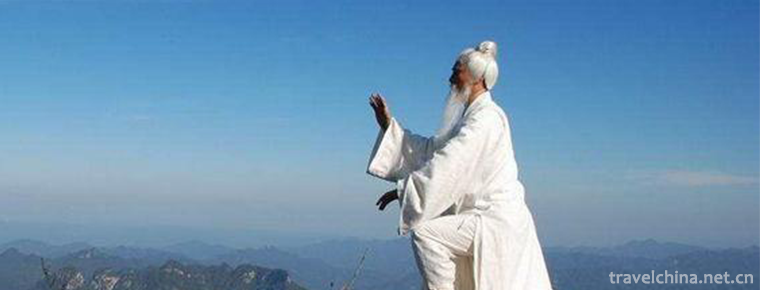
-
Legend of Meng Jiangnu
Meng Jiangnu's story, as one of the four love legends in ancient China (the other three are Niulang and Zhinu, Liang Shanbo and Zhu Yingtai, and The Legend of White Snake), has been widely circulated .
Views: 266 Time 2018-12-23 -
Huang Yaguan the Great Wall
The Great Wall of Huangyaguan lies in the mountains 28 kilometers north of Jizhou District. Historically, there were 18 garrison piers and abutments in Jizhou City. Huangyaguan Pass .
Views: 63 Time 2019-01-19 -
Weihai Dingxiang Ecotourism Resort
Panjin Dingxiang Ecotourism Resort is located in the western suburb of Panjin City. The tourist area is mainly composed of Taiping River scenic belt, Bird Paradise Scenic.
Views: 501 Time 2019-02-22 -
Landscape Architecture in Yangzhou
Yangzhou gardens began in the Western Han Dynasty, flourished in the Sui and Tang Dynasties, matured in the Song and Ming Dynasties, and flourished in the Qianlong Period of the Qing Dynasty..
Views: 144 Time 2019-04-21 -
March 3rd Festival of Li Nationality
The third day of March (the third day of the third month of the third lunar month) is the grandest traditional folk festival of the Li people in Hainan Province. It is also a beautiful day for the you.
Views: 198 Time 2019-05-12 -
Pumi rubbing
Pumi nationality rubbing "rubbing consultation" is Pumi language, "rubbing" means dancing, "rubbing" means dancing, that is, dancing. When dancing, the leader strikes the.
Views: 307 Time 2019-06-09 -
Fried peanuts
Fried peanuts is a dish made of peanuts and other materials. It belongs to the family dish and serves wine. When drinking, people often choose this dish as the next dish..
Views: 316 Time 2020-03-15 -
Rongxian Giant Buddha
Located in the eastern suburb of Rongxian County, Sichuan Province, the Giant Buddha of Rongxian county is carved in the Tang Dynasty. It is a cliff carved statue of Sakyamuni, 36.67 meters high, 8.76 meters long, 12.67 meters wide, 12 meters high and 3.5 meters wide. It is the world's largest Sakyamuni Buddha (Modern Buddha)..
Views: 330 Time 2020-10-15 -
Tourist guide to Chengdu Giant Panda Base
Chengdu Giant Panda Breeding Research Base is located in Futou mountain, north suburb of Chengdu City, Sichuan Province. It is 10 kilometers away from the urban area. There is a wide panda Avenue connecting with the urban area..
Views: 324 Time 2020-12-13 -
Guangyuan natural resources
There are more than 4700 water conservancy projects in Guangyuan City, including 6 medium-sized reservoirs and 558 small reservoirs. There are 1.583 million mu of water area, 6.867 billion cubic meters of water resources and 1 billion cubic meters.
Views: 322 Time 2020-12-15 -
Suining history and culture
As a place name, "Suining" began in the Eastern Jin Dynasty. The Eastern Jin Dynasty coexisted with the Sixteen States, while Suining belonged to the Chenghan state. At that time, the rulers of various countries had been fighting with each other for years.
Views: 203 Time 2020-12-16 -
Education in Neijiang
By the end of 2019, there are 1170 schools at all levels in Neijiang City, with 570100 students and 39400 teaching staff. There are 689 kindergartens with 88900 students; 274 primary schools with 205400 students; 137 junior high schools with 126400 students;.
Views: 349 Time 2020-12-16
